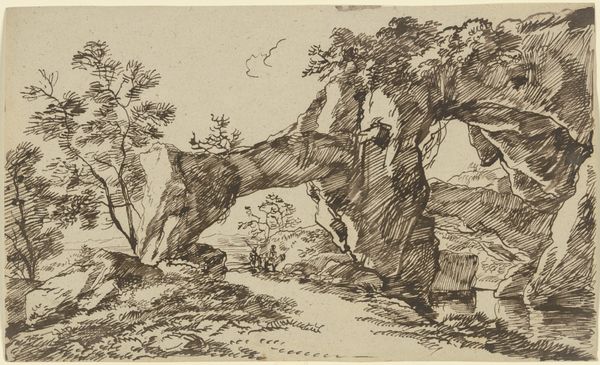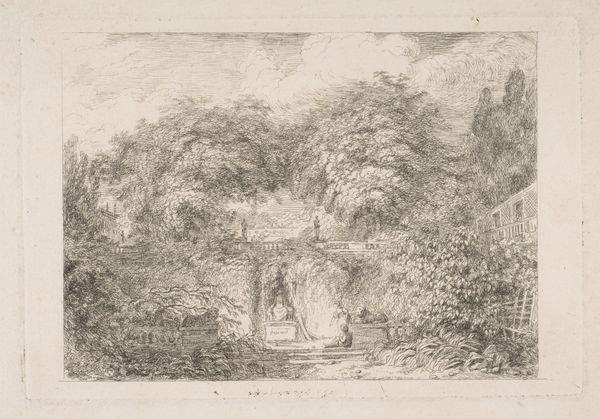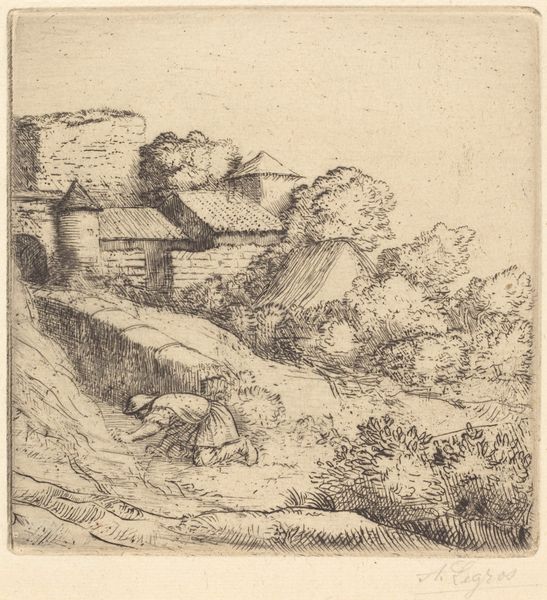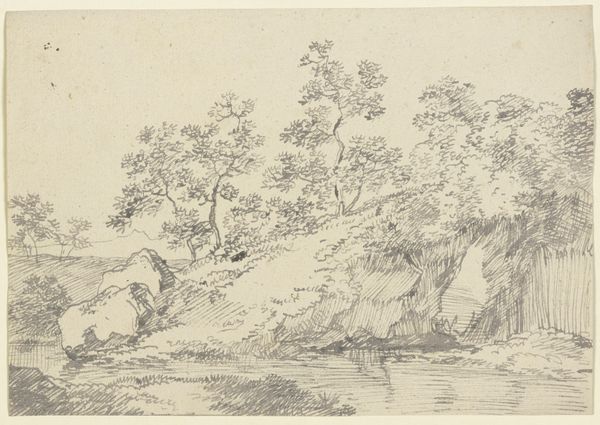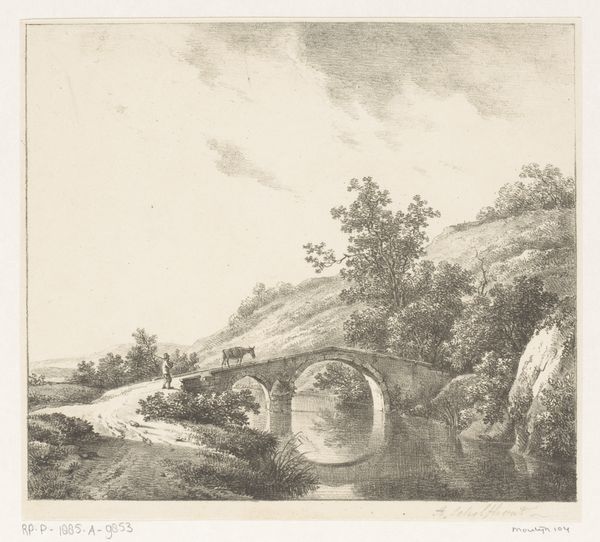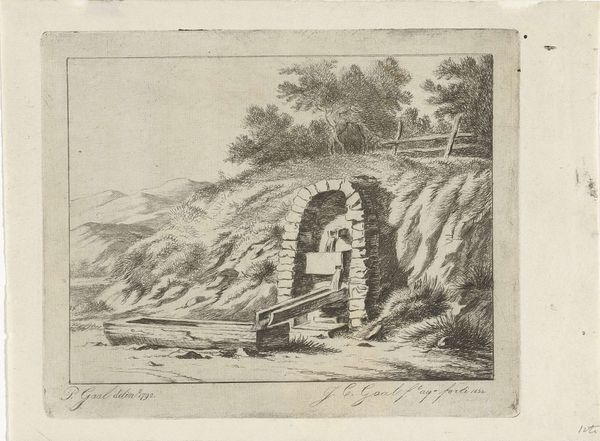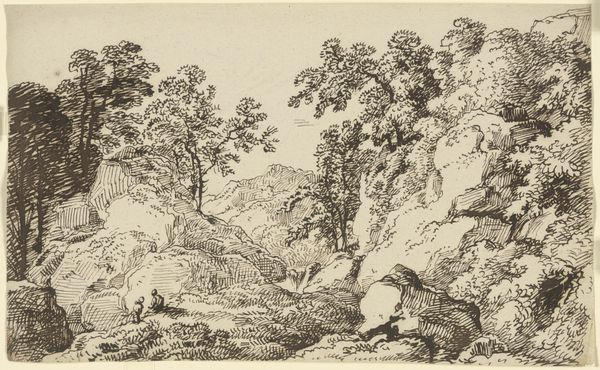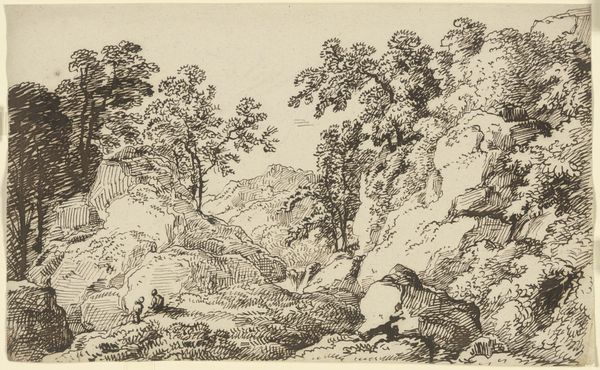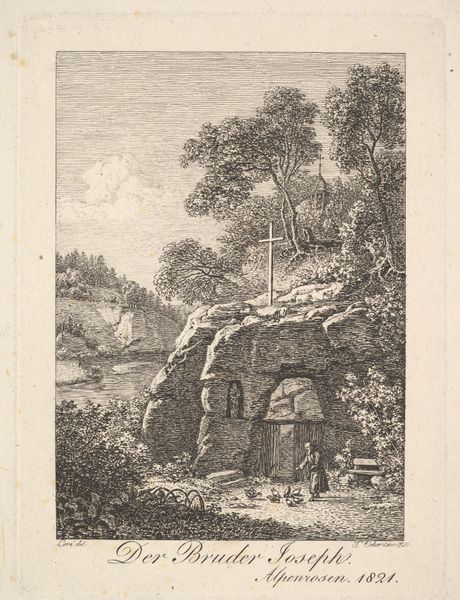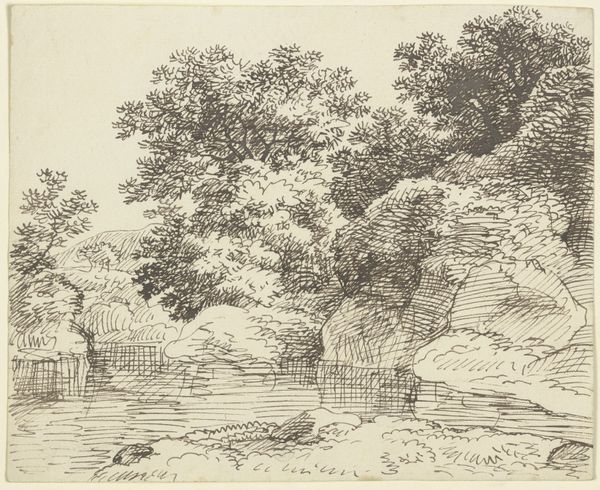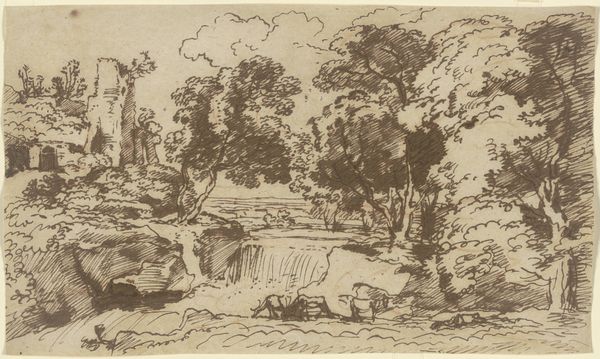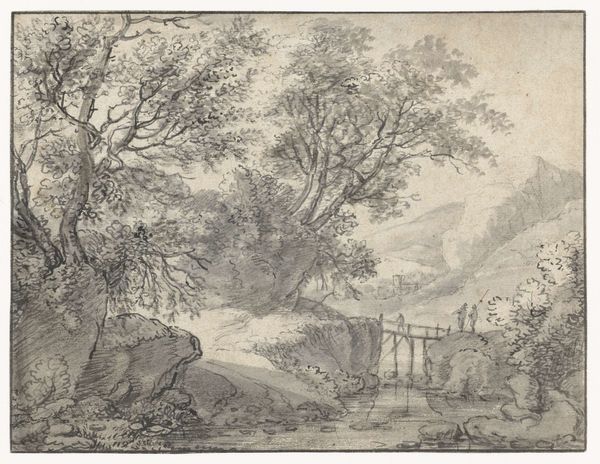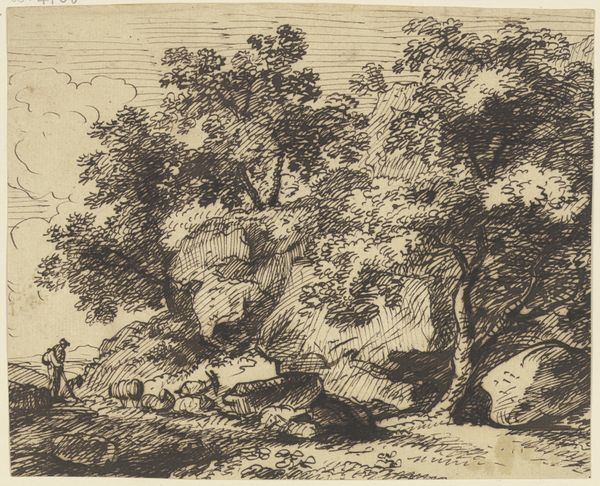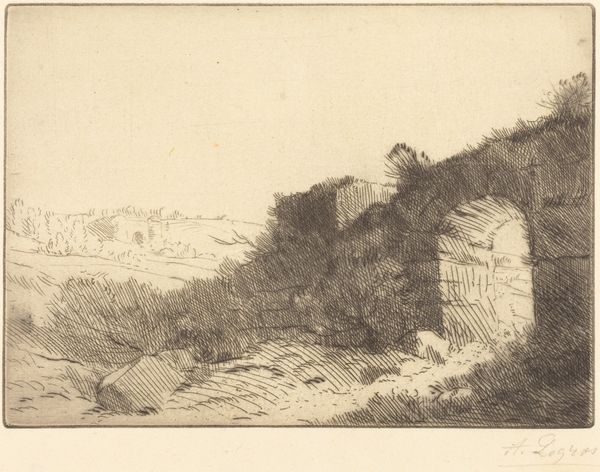
print, etching
# print
#
etching
#
old engraving style
#
landscape
#
classical-realism
#
etching
#
rococo
Dimensions: plate: 11.2 x 15 cm (4 7/16 x 5 7/8 in.) sheet: 11.9 x 15.5 cm (4 11/16 x 6 1/8 in.)
Copyright: National Gallery of Art: CC0 1.0
Editor: Here we have "The Spring at l'Orsière," an etching created in 1759 by Jean Jacques de Boissieu. It feels quite serene, but also… melancholy? It has a beautiful sense of texture in the stone and foliage. What draws your eye to this print? Curator: Immediately, I consider the materiality of etching itself. Look at the deliberate act of incising lines into the metal plate. Think about the skilled labor needed to control the acid, the biting, the depth of the lines. The final product becomes a commodity; prints allowed for wider distribution of images to the middle classes. Did the increased availability of art like this democratize it or cheapen it? Editor: That’s a perspective I hadn't considered. How the accessibility impacted the artwork… Curator: And look closely: is this a "natural" spring, or is it improved? Notice the stone basin; Someone labored to build that arched structure. This wasn’t some untouched wilderness, but a resource altered to fit human needs and pleasures. How might ideas about property and use of nature have factored into both production and reception? Editor: I guess the 'natural' world is always mediated by human interaction. And creating art *about* it… doubly so. Curator: Precisely. Now, how did the artist intend for this piece to circulate and be consumed within the artistic and social spheres of its time? Were images of such places more political than we might first think? Editor: That’s fascinating. I now have a completely different idea about its making *and* meaning. Thanks! Curator: You’re welcome. Seeing art as a product of material forces always adds a new dimension to appreciation, don’t you think?
Comments
No comments
Be the first to comment and join the conversation on the ultimate creative platform.
